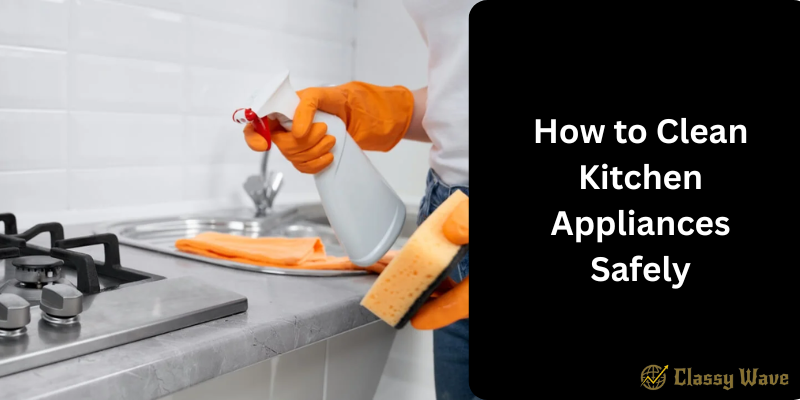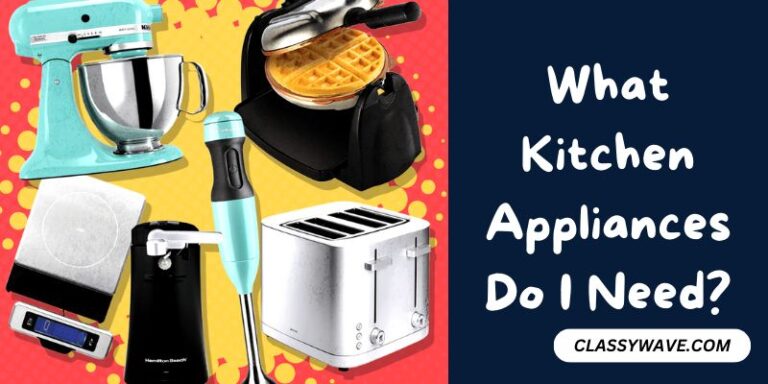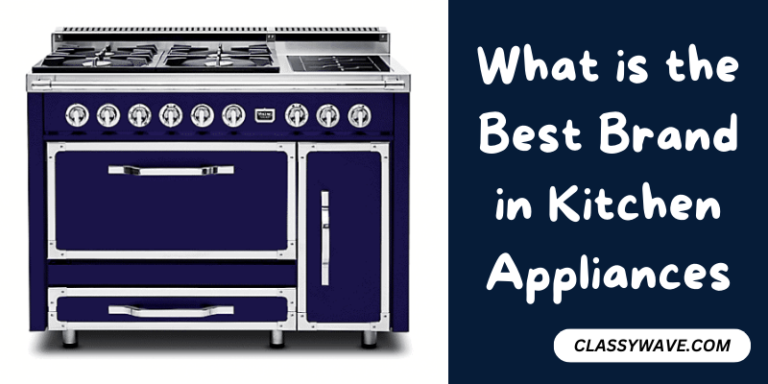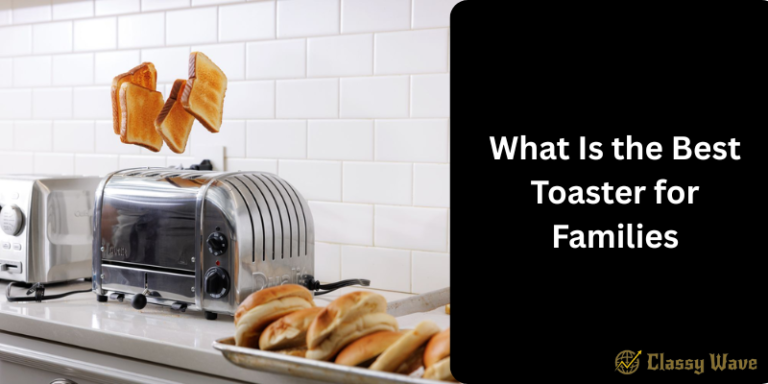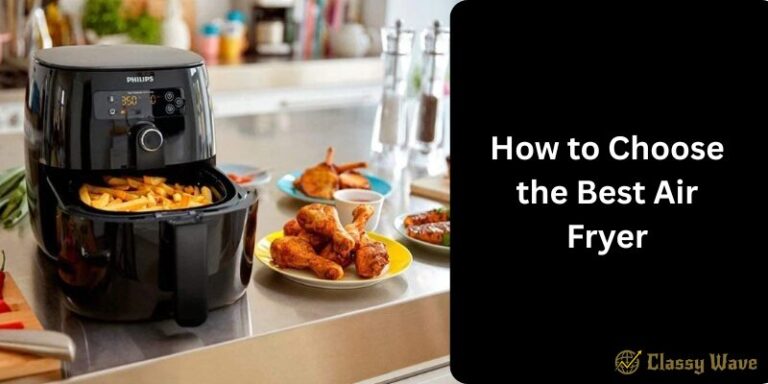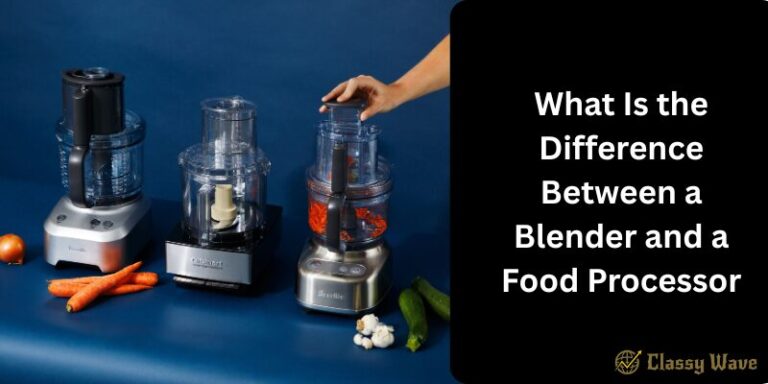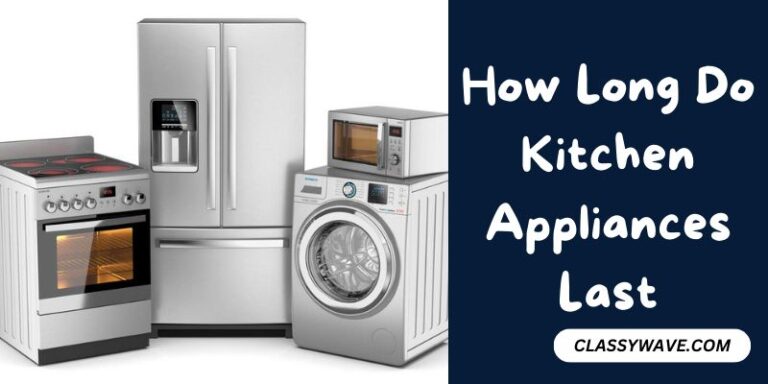How to Clean Kitchen Appliances Safely | Classy Wave
Cleaning your kitchen appliances safely is crucial to maintaining their performance, extending their lifespan, and ensuring your food stays hygienic. Whether it’s your oven, blender, microwave, or refrigerator, each appliance requires a specific cleaning approach. Let’s break down simple, effective, and safe cleaning tips that’ll make your appliances shine like new.
Why Cleaning Kitchen Appliances Matters
A clean kitchen is a healthy kitchen. Grease buildup, food residue, and bacteria can affect not only your appliance’s efficiency but also your health. Regular cleaning:
- Prevents unpleasant odors
- Improves performance
- Extends appliance life
- Keeps your kitchen hygienic and attractive
Safety First: General Cleaning Guidelines
Before diving into cleaning, remember these golden safety rules:
- Always unplug appliances before cleaning.
- Avoid submerging electrical components in water.
- Use non-abrasive cleaners to prevent scratches.
- Read the manufacturer’s manual for appliance-specific instructions.
How to Clean Your Refrigerator Safely
- Unplug and empty: Remove all food items and shelves.
- Use mild cleaner: Mix warm water with a few drops of dish soap.
- Wipe interior and exterior: Clean with a soft cloth or sponge.
- Deodorize: Place an open box of baking soda inside to absorb odors.
- Dry thoroughly: Ensure all parts are completely dry before plugging it back in.
Pro Tip: Clean refrigerator coils twice a year using a vacuum brush to boost efficiency.
How to Clean Your Microwave
- Steam clean naturally: Mix water and lemon juice in a microwave-safe bowl and heat for 5 minutes.
- Wipe down: The steam loosens grime — just wipe it with a soft cloth.
- Clean the turntable: Wash it separately with warm soapy water.
Avoid: Using harsh chemicals, as they can leave behind toxic residues that contaminate food.
How to Clean Your Oven Safely
- Remove racks: Clean them with warm water and dish soap.
- Make a natural cleaner: Combine baking soda and water into a paste.
- Apply paste: Spread it inside the oven and let it sit overnight.
- Wipe clean: Use a damp cloth to remove residue and finish with vinegar spray for shine.
Avoid: Spraying water near heating elements.
How to Clean Your Blender or Food Processor
- Disassemble parts: Separate the blades, lid, and container.
- Blend cleaning solution: Fill halfway with warm water and a few drops of dish soap; blend for 30 seconds.
- Rinse thoroughly: Make sure no soap residue remains.
Caution: Always handle blades carefully—they’re sharp!
How to Clean Your Coffee Maker
- Run vinegar cycle: Mix equal parts vinegar and water, then run a brew cycle.
- Rinse thoroughly: Run 2-3 cycles with clean water to remove any vinegar smell.
- Wipe exterior: Use a soft damp cloth to clean outside surfaces.
Pro Tip: Clean your coffee maker every 1-2 weeks to prevent mold buildup.
How to Clean Your Toaster and Toaster Oven
- Unplug first: Never clean while it’s plugged in.
- Empty crumbs: Remove and wash the crumb tray.
- Wipe exterior: Use a damp cloth with mild soap.
- Remove stuck crumbs: Gently use a small brush for interior cleaning.
Avoid: Inserting metal utensils inside—it’s dangerous and can damage heating elements.
How to Clean Your Dishwasher
- Remove racks: Wash them separately with soap and warm water.
- Clean filter: Take out the filter and rinse it under running water.
- Run vinegar cycle: Place a cup of vinegar on the top rack and run a hot cycle.
- Deodorize: Sprinkle baking soda on the bottom and run a short rinse cycle.
Result: Sparkling dishes and a fresh-smelling dishwasher.
How to Clean Your Air Fryer
- Unplug and cool: Wait until it’s completely cool.
- Clean basket: Wash with warm water and mild soap.
- Wipe interior: Use a damp cloth for the heating element area.
- Dry properly: Make sure everything is fully dry before reassembling.
Tip: Avoid using metal scrubbers—they damage the non-stick coating.
How to Clean Your Blender or Mixer
- Unplug before cleaning: Safety first!
- Detach parts: Clean blades and jars with warm soapy water.
- Wipe motor base: Use a damp cloth only—never submerge it in water.
Natural Cleaning Alternatives
You don’t always need harsh chemicals. Try these eco-friendly options:
- Baking soda: Great for removing grease and odors.
- Vinegar: Natural disinfectant and deodorizer.
- Lemon: Adds freshness while cutting through grime.
These ingredients are safe, effective, and affordable.
Common Mistakes to Avoid
- Using abrasive pads that scratch surfaces.
- Spraying cleaners directly on electrical parts.
- Ignoring appliance manuals.
- Forgetting to dry parts completely before use.
Maintenance Tips for Long-Lasting Appliances
- Clean appliances regularly, not just when dirty.
- Use protective covers to prevent dust buildup.
- Check for wear and tear regularly.
- Avoid overloading devices like blenders or dishwashers.
Conclusion
Keeping your kitchen appliances clean and safe doesn’t have to be complicated. With simple, regular cleaning habits and natural solutions, you can maintain a spotless, healthy kitchen while extending your appliance life. Remember—safety always comes first, so unplug before you scrub!

